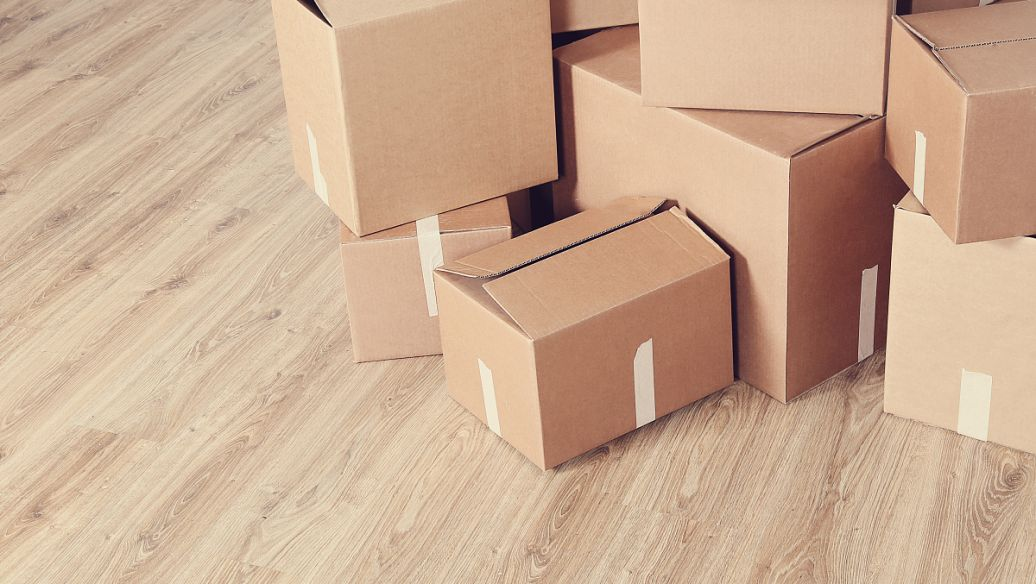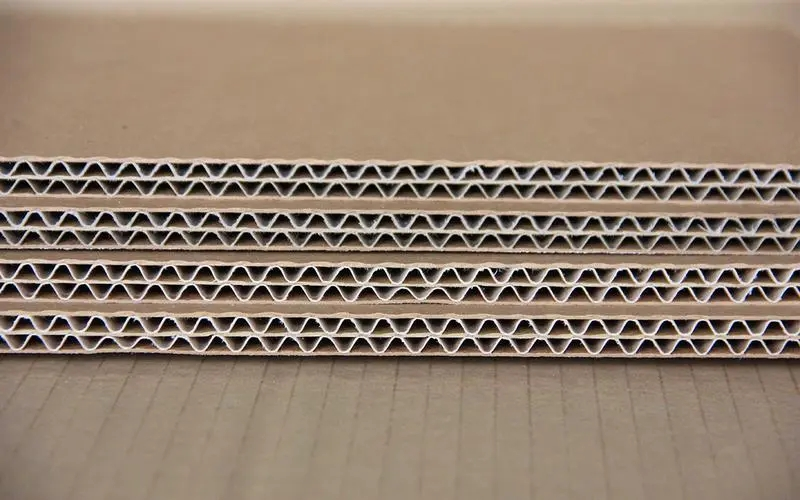Corrugated cardboard is a carton made by die cutting, creasing, nailing or gluing.

Corrugated boxes are the most widely used packaging products, and their usage has always been the first among various packaging products. Including calcium plastic corrugated boxes.
For more than half a century, corrugated boxes have gradually replaced wooden boxes and other transportation packaging containers with their superior performance and good processing performance, becoming the main force of transportation packaging.
In addition to protecting goods and facilitating storage and transportation, it also plays a role in beautifying and promoting goods.
Corrugated boxes are green and environmentally friendly products, which are good for environmental protection and convenient for loading, unloading and transportation.
Corrugated carton is an ordinary paper packaging product that is inseparable from our lives and production. Testing various strength indicators is a very important link in production and is of great significance for ensuring product quality and performance. To produce qualified carton products, corrugated cartons must be inspected so that the production process of corrugated cartons can be effectively controlled.
01. Appearance quality
Qualified cartons require clear printed patterns and writing, without broken lines or missing lines; the color of the pattern is consistent, bright and bright, and the printing position error is small. The error for large cartons is within 7mm, and the error for small cartons is within 4mm. The surface quality should be intact, without damage or stains, there should be no holes around the box, and there should be no gaps when the lids are closed. In addition, the cabinet joints are also required to be standardized, with neat edges and no overlapping corners.
02. Moisture content
The so-called moisture content refers to the moisture content in corrugated base paper or cardboard, expressed as a percentage. Moisture content has a great impact on the strength of the carton box. It is one of the three major defect inspection items of the carton. Corrugated base paper has certain compression resistance, tensile resistance, puncture resistance and folding resistance. If the moisture content is too high, the paper will appear soft, have poor stiffness, and have poor corrugating and bonding quality. If the moisture content is too low, the paper will be too brittle, prone to cracking during corrugation, and will have poor folding resistance. If the difference in moisture content between corrugated paper and boxboard paper is too large, the corrugated cardboard processed by a single-sided machine will easily curl, and blistering and degumming will occur when laminating. If the formed carton absorbs moisture during storage, the strength of the carton will be significantly reduced, affecting its use.
03. Cardboard thickness
There are many reasons that affect the thickness of cardboard. If the thickness of corrugated cardboard is thin, its edge pressure strength, puncture strength and compressive strength will be reduced accordingly. Corrugated cardboard has different flute types and different thicknesses. Laboratories usually use corrugated cardboard thickness meters to detect the thickness of cardboard.
04. Carton weight
Measuring the weight of cartons is also an important task in carton companies. Carton companies need to measure carton weights during export declarations and when counting output. In addition, sometimes customers will also use carton weights as one of the standards for carton material inspection. one.

05. Edge pressure strength
The amount of pressure that a sample of a certain width can withstand per unit length is called edge pressure strength. The edge pressure strength of a corrugated carton refers to the ability to withstand pressure parallel to the direction of the corrugation. The ring crush strength of the base paper and the bonding strength of the cardboard determine the edge crush strength of the cardboard to a large extent. Results are expressed as mean values.
06. Compressive strength
The compressive strength of a corrugated box refers to the maximum load and deformation it can withstand until the box is damaged when a pressure testing machine applies dynamic pressure evenly. During the entire pressure-bearing process of the carton, the four corners are mainly stressed, accounting for about two-thirds of the total force. Therefore, during the production process, we should try to minimize damage to the corrugations around the four corners of the carton. The compressive strength of cartons is divided into effective value and final value. The better the quality of the carton, the higher the effective value of the compressive strength, and the smaller the deviation between the effective value and the final value.
07. Adhesion strength
The degree of adhesion between the corrugated cardboard's top paper, lining paper, core paper and corrugated corrugated paper, and the maximum peeling force it can withstand within a certain unit length, is called the adhesive strength of the corrugated cardboard, which represents the strength of the corrugated cardboard. firmness. The quality, formula, equipment, operation process and other factors of the adhesive determine the adhesion strength of the cardboard, and the adhesion strength of the cardboard largely affects the pressure resistance and durability of the carton. Bursting strength and puncture strength.
08. Folding endurance
As a packaging container, the carton's lid needs to be opened frequently, which requires the cardboard to have a certain folding resistance.
The slurry properties of boxboard and whiteboard paper, the moisture content, tightness, fiber length and bonding fastness of the base paper, as well as the storage time and temperature of the base paper, determine to a large extent the folding resistance of the base paper. This determines the folding resistance of the carton.
09. Carton dynamic performance
For the packaging of some specific commodities such as ceramics, glass products, electronic instruments, etc., the cushioning performance of the cartons for the commodities must also be tested, that is, tests such as simulated transportation, loading and unloading, vibration, and drops are conducted to test the performance of the cartons.
10. Three standards
Category A unqualified: The carton cannot meet the function of protecting or marking the contents.
(1) Seams come apart.
(2) The dimensions exceed the allowable error range.
(3) The quality is lower than the specified minimum value.
(4) The indentation line is broken or the paper surface is cut off.
(5) The surface is torn, punctured, has holes, or the cover flaps are irregular and have excess cardboard pieces stuck to them.
(6) Printing errors, incomplete printing or color and pattern errors.
(7) Pollution caused by external substances.
Category B unqualified: The carton is not fully functional or has problems.
(1) The seams are not completely bonded, the tape joints are incomplete or the joints are not nailed sufficiently.
(2) Slots cut into the edges of the sides of the carton.
(3) The cover pieces cannot be docked, and the gap is greater than 3mm.
(4) The moisture content of cardboard is higher than 20% or lower than 5%.
(5) The carton is bent at non-indented areas.
(6) The printing on the box is incomplete or the graphics and text are blurred.
(7) The carton does not take anti-slip measures as required.
Category C unqualified: The appearance of the carton is poor, but its function is not affected.
(1) Slotting or carton die cutting is rough.
(2) The surface of the cardboard has washboard-like unevenness, which affects the quality of printed graphics and text.
(3) There are contamination spots on the box surface.
(4) Shallow scratches or marks rubbed off.
Post time: Mar-27-2024





